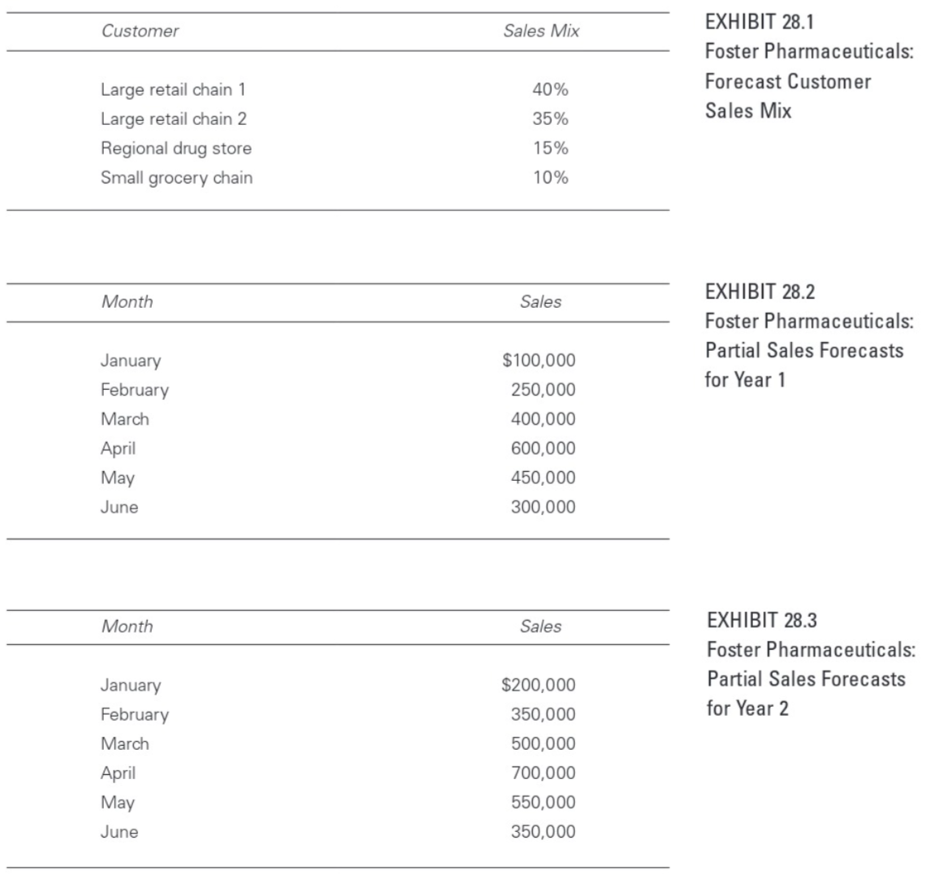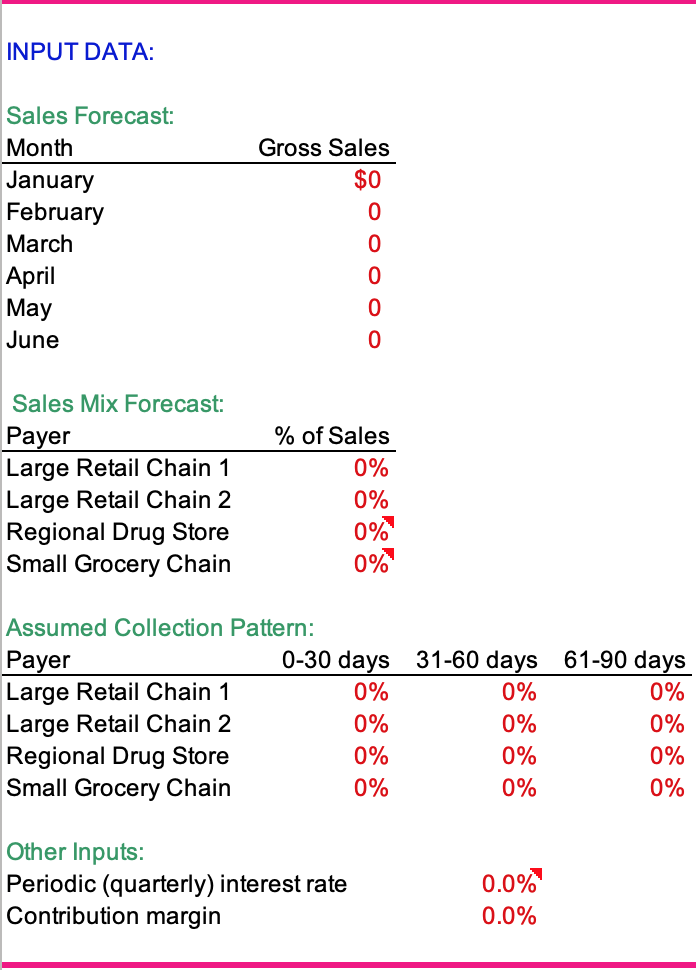Question
Read, complete, and submit Case 28, Foster Pharmaceuticals Receivables Management case, on pages 193 - 196, in our Cases in Healthcare Finance supplemental textbook. Students
Read, complete, and submit Case 28, Foster Pharmaceuticals Receivables Management case, on pages 193 - 196, in our Cases in Healthcare Finance supplemental textbook. Students must determine the appropriate input values and enter them into the model. These cells are colored in RED. 

Case 28, Foster Pharmaceuticals Receivables Management:
Kathleen Grogan received her Ph.D. in pharmacology ten years ago from Boston University. While there, she became very interested in the business side of drug distribution and hence stayed on for an extra 18 months to earn an MBA. After graduation, she went to work for Capo Corporation, a major drug manufacturer, where she managed the development of a new nonprescription antiallergy drug. Although the drug passed all Food and Drug Administration (FDA) trials and was certified for general use, Capo simultaneously developed a similar drug that was cheaper to produce and equally effective in treating most, but not all, allergy symptoms. Thus, Capo decided not to proceed with the production of the drug that Kathleen helped develop. However, Capo was willing to license production and distribution rights to another company. Kathleen thought that this might be a golden opportunity, so she quit her job with Capo to found her own company, Foster Pharmaceuticals. The sole purpose of the new company is to obtain the license for, produce, and distribute the new drug, which Kathleen dubbed SneezeRelief.
Kathleen is currently working on the business plan that she will present at a venture capital conference to be held in New York. The main purpose of the conference is to match entrepreneurs with venture capitalists who are interested in providing capital to fledgling firms. Kathleen has spent a lot of time thinking about how her proposed companys receivables should be managed; she is concerned about this issue because she knows of several small drug manufacturers that have gotten into serious financial difficulty because of poor receivables management.
Initially, Foster Pharmaceuticals would sell directly and exclusively to four retail customers in the Northeast (Exhibit 28.1 provides the sales mix). If demand proved solid, the company would expand into other areas and wholesale channels. Sales are expected to be highly seasonal: Allergy drug sales are slow during the winter months, but they pick up dramatically in the spring when plant pollen levels reach a peak. Business falls off again in the summer, but it picks up in the fall when the ragweed season begins. Kathleens sales forecasts for the first six months of operations are given in Exhibit 28.2. Assuming the fledgling company receives financing and begins operations, Kathleens sales forecasts for the first six months of the second year are provided in Exhibit 28.3. Kathleen does not plan to give discounts for early payment; discounts are not widely used in the industry. Based on preliminary discussions with the retail outlets (her customers) Kathleen forecasts the payment schedule, shown in Exhibit 28.4. She does not foresee any problems with bad-debt losses; the retailers she plans to sell to have been in business for a long time. Furthermore, she plans to carefully screen her customers, and she believes that these two factors will eliminate such losses. On average, Kathleen believes that 20 percent of receivables will contribute to profits, so 80 percent of receivables represent cash costs. Furthermore, the First National Bank of New England has indicated that its receivables financing would cost 8 percent annually.
In spite of her optimism regarding bad-debt losses, Kathleen is concerned about the companys potential level of receivables, and she wants to have a monitoring system in place that will allow her to quickly spot any adverse trends that develop. Kathleens total sales forecast for the first full year of operations is 800,000 packages. Each package, which will contain 12 tablets, will be priced at $5. Kathleen has hired you as an outside consultant to advise her about receivables management. So far, you have developed a model that produces accounts receivable balances, average collection period (ACP), aging schedules, uncollected balances schedules, and quarterly carrying costs for the end of March and the end of June. The uncollected balances schedule permits managers to remove the effects of seasonal and/or cyclical sales variation and to construct an accurate measure of receivables payment patterns. Thus, it provides financial managers with better aggregate information than such crude measures as the ACP or aging schedule. Kathleen anticipates that the venture capitalists will ask some questions concerning the interpretation of the receivables data, the sensitivity of the results to the basic assumptions, and strategies to reduce the carrying costs of receivables.

Step by Step Solution
There are 3 Steps involved in it
Step: 1

Get Instant Access to Expert-Tailored Solutions
See step-by-step solutions with expert insights and AI powered tools for academic success
Step: 2

Step: 3

Ace Your Homework with AI
Get the answers you need in no time with our AI-driven, step-by-step assistance
Get Started


